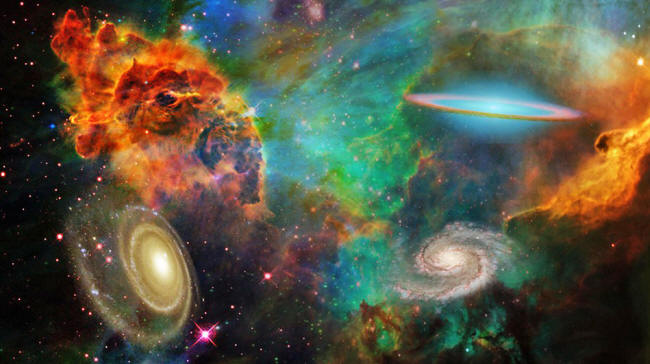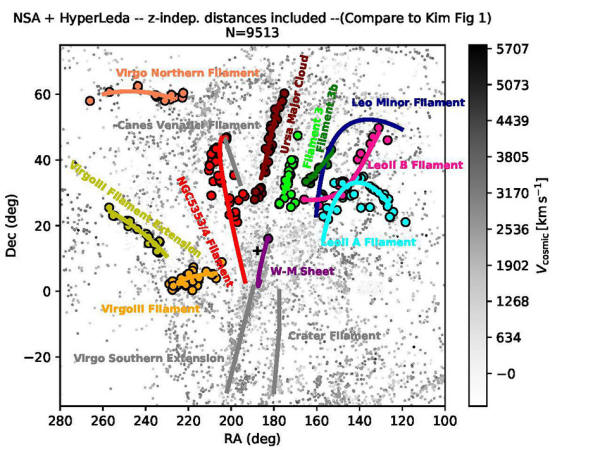|
by Sarah Perrin
According to a recent
study headed by EPFL's Laboratory of Astrophysics, this cosmic web
plays a much bigger role than previously thought.
And where those filaments intersect, galaxy clusters - collections of hundreds or even thousands of galaxies bound to each other by the force of gravity - tend to form.
They are the biggest and
densest clusters in the universe and are the subject of much
research by astrophysicists. But precisely how filaments contribute
to galactic evolution is still poorly understood.
The team's findings have been published in two articles:
The scientists analyzed the properties of galaxies located around the Virgo cluster, across a region spanning 12 times the radius of the main cluster.
Theirs is the largest study conducted to date on this topic and covers a sample size of some 7,000 galaxies, including 250 that are big enough for scientists to be able to precisely estimate their gas content - and especially the amount of cold, dense atomic hydrogen that stars are made out of.
Measurements were taken
using the decametric telescope in
Nanšay Radio Observatory, France,
and the
IRAM-30m telescope in Pico Veleta,
Spain.
...clearly change as the
galaxies progress from more isolated positions towards
filaments and eventually
into clusters.
In this environment, star formation slows or even stops altogether, elliptical shapes appear more frequently, and there is less atomic and molecular hydrogen, indicating that the galaxies are reaching the end of their active life.
The scientists observed that a galaxy's evolution through its life cycle corresponds to the local galaxy density:
These findings open up
new avenues of research on theories to explain galaxy formation and
how galaxies evolve in tandem with major cosmic bodies.
|



